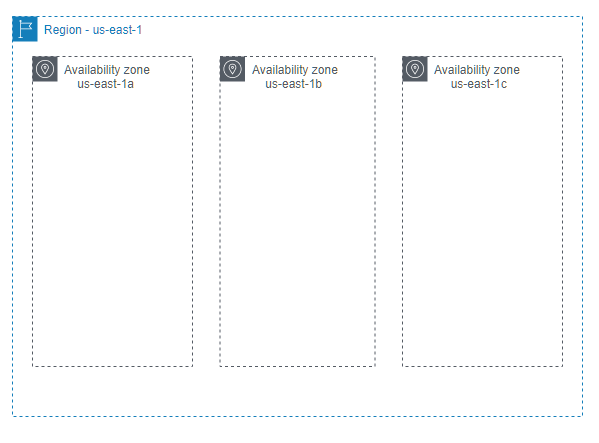AWS Region is a physical location where AWS maintains multiple data centers that are interconnected by a low-latency network. Each region is a separate geographic area, identified by a unique name and code, such as us-east-1 or eu-west-2. AWS Regions are strategically located in different parts of the world to provide customers with a wide selection of geographic locations for hosting their resources, applications, and services.
Each AWS Region consists of two or more Availability Zones (AZs), which are physically separate data centers located within a single region. Each AZ is designed to be highly available and fault-tolerant, with independent power, cooling, and networking infrastructure.
AWS Regions are interconnected by a low-latency network, and each region is designed to be completely independent of the others, both physically and logically. By deploying resources across multiple AZs, customers can increase the availability and durability of their applications and data, and achieve greater resilience in the face of disasters and service interruptions.
The purpose of an AWS Region is to provide customers with a way to deploy their applications, services, and resources in a location that is close to their users or meets their regulatory or compliance requirements. For example, if a customer’s user base is mostly located in Europe, they can choose to deploy their resources in an AWS Region that is located in Europe, such as Frankfurt, London, or Paris, to reduce latency and improve the user experience. Alternatively, if a customer needs to comply with data sovereignty regulations, they can deploy their resources in an AWS Region that is located in their country or region.

Each AWS Region consists of one or more Availability Zones, which are physically separated data centers located within the same geographic area. The purpose of Availability Zones is to provide customers with the ability to deploy their resources in multiple data centers to increase availability and fault tolerance. By deploying resources across multiple Availability Zones, customers can achieve higher levels of availability and reliability, and minimize the risk of downtime or data loss. Since each Region is designed to be completely independent, customers can choose to deploy their resources in multiple Regions to achieve greater redundancy and resilience.
AWS Regions provide customers with the ability to choose the geographic location that best meets their needs for performance, latency, data sovereignty, and regulatory compliance. For example, customers may choose a region that is closest to their users to reduce latency and improve user experience, or they may choose a region that is located in a particular country or region to comply with local data protection laws. AWS Regions also offer a wide range of AWS services, including compute, storage, database, networking, security, and analytics, as well as specialized services for machine learning, IoT, and media processing.
